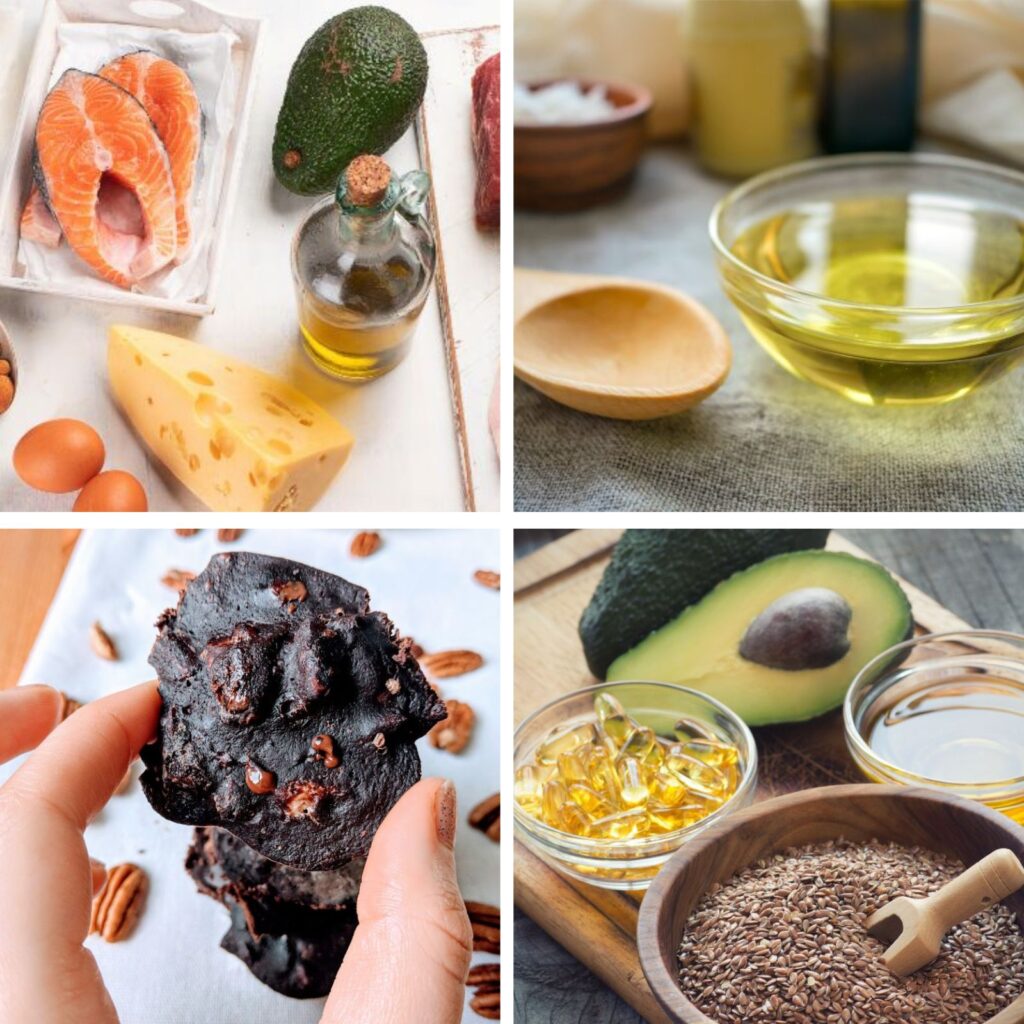Begin your keto diet right. Get yourself into ketosis quicker with these little tips. They’re simple but useful.
Ketosis is the metabolic state that your body goes into when you are not eating carbohydrates. When your body is in ketosis, your body burns stored fat, forming substances called ketone bodies.
Being in a state of ketosis has many benefits. It can not only help you lose weight but also decrease your appetite, which in turn, can help you lose even more weight. Here are 10 ways to get into ketosis faster.

1. Eat Keto-Friendly Meals
By definition, the keto diet is very low in carbohydrates. It is also moderate in protein and high in fat. This works out to about 5-10% carbs, 15-30% protein, and 60-75% fat.
Here is an example of what a keto-friendly breakfast would look like: a cheese omelet with spinach served with a side of bacon.
Here are more interesting ketogenic breakfast ideas that aren’t plain eggs.
2. Increase Your Intake of Healthy Fats
On a keto diet, you want to increase your intake of fats to get into ketosis faster. However, not all fats are good for you.
Healthy fats are good for your heart. Bad fats, on the other hand, are bad for your heart. Monounsaturated fats that are found in foods such as avocado and olive oil are good for you.

3. Give a Chance to Exogenous Ketones
Exogenous ketone is a supplement that increases the number of ketone bodies in your blood. They also boost your ketosis.
One of the most popular ketone supplements is beta-hydroxybutyrate, which is one of the 3 ketone bodies your body makes when it is in a state of ketosis.
4. Swap your Regular Snacks with Ketogenic Ones
Snacks such as cheese, Greek yogurt, seeds and nuts, and low carb fruits such as strawberries, blueberries, and raspberries are allowed.
Instead of having potato chips, for instance, try zucchini chips. Instead of having cookies and muffins made with regular flour, make them using low carb flours such as coconut flour like this and almond flour like this.
Check out more of ketogenic snack recipes here.

5. Measure Your Ketone Levels
There are 3 ways that you can measure your ketone levels. A breath test measures the amount of acetone (a type of ketone body) in your breath using a ketone breath analyzer meter.
It is a pretty reliable way to measure your ketone levels. You can find one here. A blood test measures the amount of beta-hydroxybutyrate in your blood using a blood ketone meter and strips.
A urine test measures the amount of acetoacetate (a type of ketone body) in your urine using keto urine test strips. You can get the strips here.
6. Try MCT oils
MCT oils are oils made from medium-chain triglycerides (MCTs), which often come from coconut oil. MCTs are fats that help boost your ketone levels.
With MCTs, you can even eat less fat and more protein and carbs than on a standard keto diet. You can even eat up to 20% carbs and still maintain ketosis when taking MCTs! You can find MCT oil here.
This is one of those easy keto hacks you should definitely try.

7. Exercise, Exercise, Exercise
Get your body moving! Proper nutrition is important for boosting your ketosis, but so is exercise.
When you exercise, your body’s stored carbohydrates; glycogen runs out. When you’re on a keto diet, your liver boosts the production of ketone bodies, which your muscles use for fuel.
To boost ketosis, even more, try exercising when you are fasting.
8. Don’t Consume Too Many Proteins
A lot of people switch over from the Atkins diet to the keto diet. But, they don’t cut back on their protein. The Atkins diet is a high protein diet. The keto diet, on the other hand, is a moderate-protein diet.
So, if you eat too much protein on the keto diet, you will slow down your ketosis.
9. Try Fasting
Not eating for several hours can also boost your ketosis. Even people on non-ketogenic diets get into a mild state of ketosis by breakfast time because of the time-lapse between breakfast and dinner.
When you fast, your body uses up its glycogen stores. With no other fuel source left, your body starts using up its fat stores, boosting ketosis.
And you don’t have to fast the whole day to boost your ketosis. Even intermittent fasting will do the trick.

10. Eat More Whole Foods Instead of Processed Ones
Even processed foods that may appear to be keto-friendly may not good for you. They may have hidden sugars in them, which can derail your ketosis.
By choosing whole foods, you know what is in your food. And this makes it easier to maintain your ketosis.
